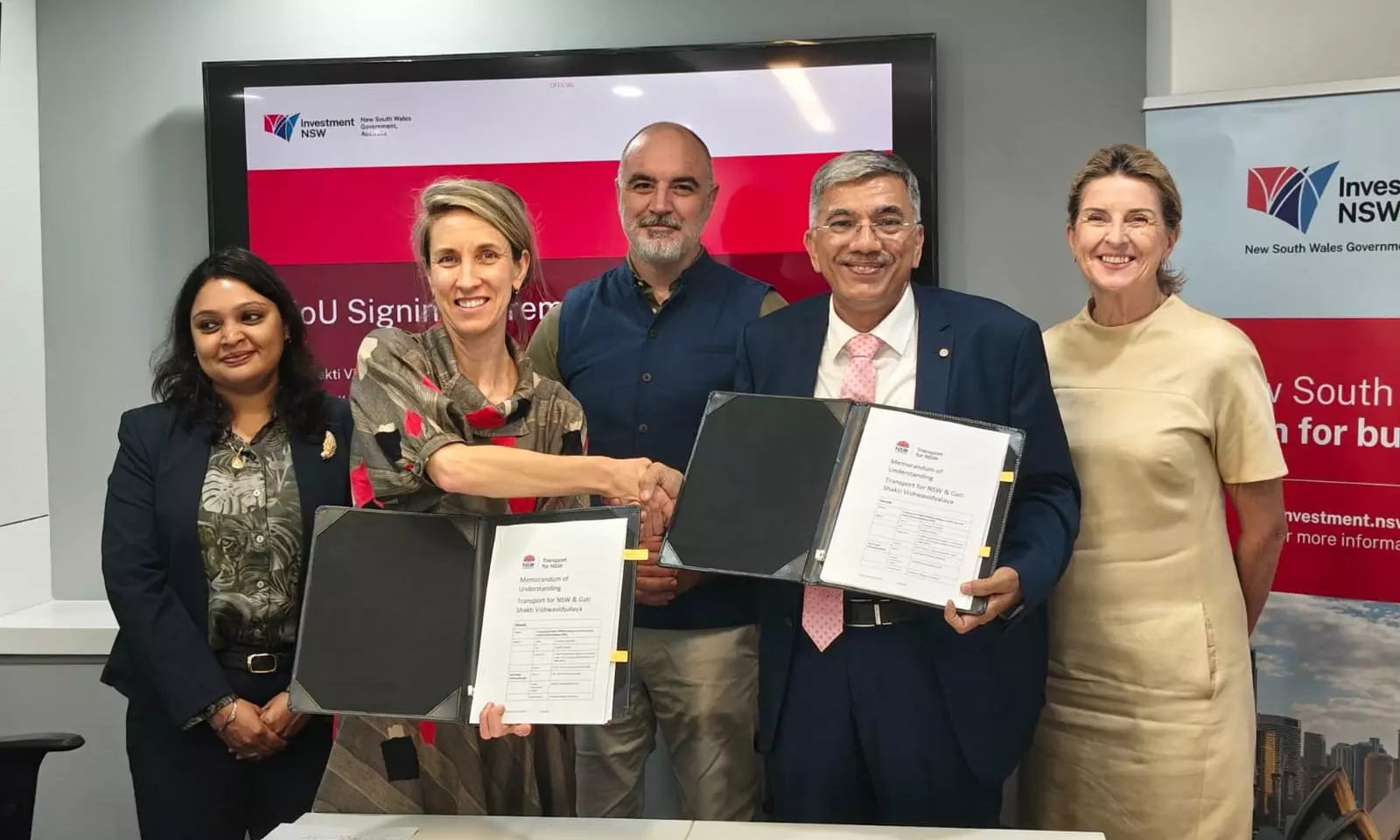Australia’s New South Wales partners with Gati Shakti Vishwavidyalaya
The partnership aims to pilot Australia’s SCATS intelligent traffic management technology in India, advancing research, education, and smart mobility solutions through Gati Shakti Vishwavidyalaya.

(L-R) Malini Dutt, Trade and Investment Commissioner - India, Investment NSW; Karla Lampe, Executive Director - Trade and International, Investment NSW; Paul Murphy, Consul General for Western India, Australian Consulate; Manoj Choudhary, Vice Chancellor of GSV; Monica Kennedy, Senior Trade & Investment Commissioner, Australian Trade and Investment Commission
The Government of New South Wales (NSW), Australia, has entered into a Memorandum of Understanding (MoU) with Gati Shakti Vishwavidyalaya (GSV), India’s only transport and logistics university, to introduce adaptive traffic management solutions in India.
The MoU, signed between Sydney Coordinated Adaptive Traffic System (SCATS), a smart traffic management technology developed by Transport for NSW, and GSV, aims to pilot the system across five intersections in India. The collaboration will focus on technology deployment, research, education, and localisation of traffic management solutions for Indian conditions.
Karla Lampe, Executive Director for Trade and International at Investment NSW, represented the New South Wales Government at the signing ceremony held at the NSW India office in Mumbai. Manoj Choudhary, Vice Chancellor of GSV, signed on behalf of the university.
Adele Beachley, Executive Director, SCATS / Transport for NSW, said the partnership “marks an exciting opportunity to tailor SCATS’ globally proven adaptive traffic system to India’s dynamic and complex traffic conditions,” noting that the software already manages more than 65,000 intersections across 200 cities in 32 countries.
Professor Choudhary emphasised the importance of this collaboration for India’s transport modernisation, stating, “This partnership aligns with India’s focus on intelligent and sustainable mobility. Our goal is to co-develop and adapt the SCATS technology to suit Indian traffic realities and scale it for national deployment.”
The MoU also includes joint research projects, executive training programs, and translation of SCATS learning modules into Indian languages. Hardware for the pilot will be sourced under India’s “Make in India” initiative.
Initial trials in India have taken place in a few cities, but this MoU marks the first structured engagement aimed at scaling the technology.
Choudhary explained that adaptive traffic systems respond dynamically to real-time conditions. “The system collects and analyses data continuously, how many vehicles are approaching, at what speed, and during which hours. Based on this, signal timings are automatically adjusted to improve flow and reduce congestion,” he said.
He added that the pilot will test this adaptive capability and incorporate machine learning for continual improvement. “Our approach is to leverage proven technology and co-develop it further to meet Indian requirements. It’s about using intelligence and data analytics to make our transport systems more efficient.”
This partnership will also focus heavily on human resource development. “Through executive training programmes, research collaborations, and real-world implementation, our students, particularly those in our M.Tech. programme on Intelligent Transport Systems, will gain hands-on experience,” Choudhary added.



